The Incomplete Wolverine: 1979
Part 1: Origin to Origin II | Part 2: 1907 to 1914
Part 3: 1914 to 1939 | Part 4: World War II
Part 5: The postwar era | Part 6: Team X
Part 7: Post Team X | Part 8: Weapon X
Part 9: Department H | Part 10: The Silver Age
1974-1975 | 1976 | 1977 | 1978
When we left the X-Men, they’d just finished an adventure in the Savage Land, and were trying to sail back to civilisation in a makeshift raft. As you do.
This is a big year for Wolverine, introducing some of the major aspects of his personal mythology.
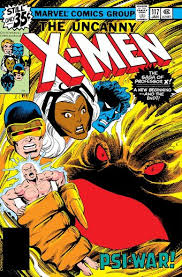
X-MEN vol 1 #117
“Psi-War”
by Chris Claremont, John Byrne, Terry Austin & Glynis Oliver
January 1979
This is a Professor X story. The other X-Men only appear in the opening pages, in which a passing Japanese ship rescues them from a deadly gale. The vessel has some sort of secret government business to attend to before returning home (we never find out what) and so the X-Men are going to be stuck on it for a while yet. The reprint in Classic X-Men #23 adds an epilogue page, where the X-Men fill the time by training, and Wolverine broods over Jean, whom he still thinks died in issue #113.
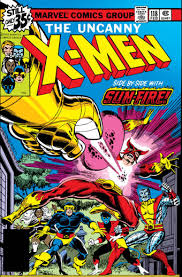
X-MEN vol 1 #118-119
“The Submergence of Japan!” / “‘Twas the Night Before Christmas”
#118 by Chris Claremont, John Byrne, Ric Villamonte & Glynis Oliver
#119 by Chris Claremont, John Byrne, Terry Austin & Glynis Wein
February and March 1979
Now this one’s important. The X-Men finally arrive in Japan, and team up with Sunfire and the Daughters of the Dragon (Misty Knight and Colleen Wing) against Moses Magnum, who is threatening to destroy Japan with earthquakes unless the country surrenders to him. The X-Men fight Magnum and his Mandroids and save the day, though Banshee overstretches his powers and loses his voice. (His powers don’t come back for years, but he’ll hang around for another ten issues before quitting the team.)
That’s the A-plot, and none of it is especially important to Wolverine. But there’s plenty of other material that is.
First, this is Wolverine’s earliest published trip to Japan, and it reveals that he speaks Japanese. From the mid 80s onwards, Japan becomes embedded in Wolverine’s personal mythology as one of the main settings for his solo stories; that all starts here. At this stage, it’s part of the trend of revealing that there’s more to the thuggish Logan than meets the eye. Wolverine claims (in thought balloons) that he “was a punk kid last time I was in Japan”, which has obviously been retconned to oblivion many times by now.
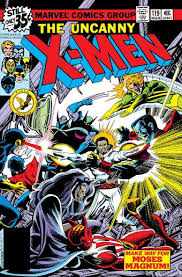
Second, Wolverine meets Sunfire’s cousin Mariko Yashida, who will be his main love interest through to the 1990s. He’s instantly smitten, and that’s basically the end of the Scott/Jean/Logan love triangle – from this point on, his attitude to Jean becomes healthier. Wolverine introduces himself to Mariko by saving her from Magnum’s earthquakes. They don’t immediately become a couple, but they do keep in touch from this point on. In her early appearances, Mariko is little more than a cipher who wears traditional dress and is presented as a paragon of demure Japanese ladyhood. (“I am only a girl… I haven’t the courage of my samurai cousin, Shiro.”) If you’re feeling generous, we’re viewing her in these early appearances through Wolverine’s rose-tinted glasses – at first, he sees her as a precious, fragile thing that he doesn’t deserve because he’s so violent and unrefined. In other words, she’s defined entirely by how he feels about her. That’ll change by the mid 80s, but at this stage, she’s one-dimensional.
Third, having studiously avoided using his real name with the other X-Men, Wolverine immediately tries to introduce himself to Mariko as “Logan” (though he gets interrupted by the earthquake). Wolverine was addressed as Logan by the leprechauns of Cassidy Keep in 1976, but this is the first time we see him use the name himself, or go by anything other than “Wolverine”. For obvious reasons, Logan is far less combative and obnoxious with Mariko than he is when dealing with his teammates. With this and the Savage Land story, the book’s attitude to Wolverine has noticeably shifted – now we’re meant to like him, and recognise the hidden depths that Mariko will help to draw out of him.
The expansion pack:
- Classic X-Men #25 reprints issue #119; there’s an added scene at the hospital while Banshee is recovering, and Logan appears with the rest of the team. (He doesn’t appear in the new scenes in Classic X-Men #24.)
- Wolverine: Origins #46 has a flashback to Logan’s first meeting with Mariko, which is a straight retelling.
- Spider-Man & Wolverine #2, a Marvel Knights book from 2003, has a flashback in which Wolverine breaks into the compound of Japanese drug dealer Takeshi Kishimoto, looking for evidence to bring him down. He stumbles upon Kishimoto’s daughter, and it’s strongly implied that they make love. Awkward as it seems, the gap between the main story and the epilogue in issue #119 is the only place this can really go, since after that point he’s in a relationship with Mariko.

X-MEN vol 1 #120-121
“Wanted: Wolverine! Dead or Alive!” / “Shoot-out at the Stampede!”
by Chris Claremont, John Byrne, Terry Austin & Glynis Wein
April and May 1979
The X-Men, Misty and Colleen head back to America on a private plane. Before boarding, Wolverine gives Mariko a white chrysanthemum to remember him by, and tells her that his name is “Logan” – the first time he uses that name himself on panel. It’s all part of Logan dropping his defensive shell to let Mariko in. He continues to wonder whether he’s suitable for a lady like Mariko.
Department H are still trying to retrieve Wolverine, and so the X-Men’s plane is forced to Calgary by a magical blizzard, leading to a fight with the debuting Alpha Flight: Vindicator (James Hudson with the same costume but a new name), Sasquatch (Walter Langkowski), Northstar (Jean-Paul Beaubier), Aurora (Jeanne-Marie Beaubier), Shaman (Michael Twoyoungmen) and Snowbird (“Anne McKenzie”, though she’ll eventually turn out to be a magical creature called Narya). Wolverine finally deigns to tell the X-Men some of his back story, explaining that he was Hudson’s first recruit for a Canadian superhero team, and that Hudson stood by him when all the psychiatrists advised that he was an uncontrollable psycho. Logan reflects that with hindsight, Hudson was wrong.
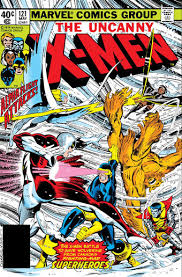
Wolverine strongly implies here that, except for Vindicator, he’s never met the members of Alpha Flight before. Plenty of retcons will later establish that he has, and strictly speaking, all he actually says is that he doesn’t know who’s currently on the team. Alpha Flight are linked here to Wolverine’s emerging theme of self-control: Vindicator tries to take credit for making Wolverine something more than a “feral wild-child”, while Wolverine claims he was railroaded into being a superhero with no real say in the matter. (Of course, embracing that role is still part of the way in which he achieves redemption.)
Finally, Wolverine feigns surrender in order to stop the fighting, only to escape and sneak aboard the X-Men’s plane before it leaves. By this point we’ve got a recognisable, charismatic Wolverine – and his signature character trait has shifted from general obnoxiousness to a battle for self-control and humanity, with Mariko serving as his motivation.
The expansion pack:
- Wolverine: Origins #46 has a flashback to the X-Men’s departure from Japan. It contradicts the original story, claiming that Wolverine didn’t say goodbye to Mariko when they left. That’s completely wrong, and it’s hard to say whether this is an intentional retcon or a blunder.
- The reprints in Classic X-Men #26-27 do contain extra scenes, but they don’t feature Wolverine. The extra pages stop here, though Classic X-Men keeps running back-up stories through to issue #44.
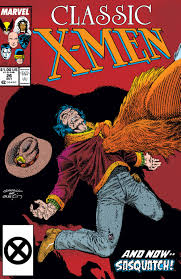
Sticking with Wolverine: Origins #46, its flashback continues. On returning to America, Wolverine begins corresponding regularly with Mariko. He finds that he can express himself more freely in a long-distance written relationship, and eventually the two declare their love for each other. This probably has to be taken as spanning an extended period going forward – but it’s a rare case of Origins smoothing over a gap by simply spelling out what was always implied.
CLASSIC X-MEN #26
“So Much in Common”
by Tom Orzechowski & John Bolton
October 1988
Sean and Logan reminisce about Calgary and realise that they once crossed paths without noticing. A curio, with the flashbacks drawn in an uncharacteristically cartoony style – and the only Wolverine story written by longtime X-Men letterer Tom Orzechowski. This was the back-up strip to the reprint of X-Men #120, and it comes out of sequence because the reminiscence is expressly prompted by the team’s recent visit to Calgary.

CLASSIC X-MEN #25
“Just Don’t Look in its Eyes…”
by Ann Nocenti & John Bolton
September 1988
Wolverine goes on a side mission for “Central” – presumably the CIA – to blow up a villain base. Caught in the explosion, he’s stranded in the wilderness and crosses paths with an amateurish hunter. It’s a dry comedy piece contrasting Wolverine with the hunter’s delusional confidence.
X-MEN vol 1 #122
“Cry for the Children”
by Chris Claremont, John Byrne, Terry Austin & Glynis Wein
June 1979
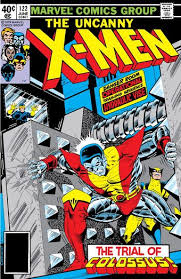
Mostly a Storm issue, but it has two significant Wolverine scenes. First, there’s a Danger Room sequence where Colossus is struggling with a hydraulic press in the Danger Room, and a smirking Wolverine climbs in to give him some motivation. This is a stupid thing to do. But the angle is that Wolverine has some sort of deeper insight into what Colossus needs to hear, and he can get through to Colossus when the more rational Cyclops can’t.
And second, Logan discovers that Mariko is visiting the Japanese consulate (it’s never entirely clear why, or what her job is) and tries to meet up. The story implies that he’ll struggle to contact her, but that’s immediately dropped.
X-MEN vol 1 #123-124
“Listen – Stop me if You’ve Heard it – but This One Will Kill You” / “He Only Laughs When I Hurt!”
by Chris Claremont, John Byrne, Terry Austin & Glynis Wein
July and August 1979

Logan and Mariko have dinner at the Japanese consulate in New York, and agree to see each other again. From here on, they’re officially a couple. Logan is delighted, and starts thinking about changing his way of life so that he’ll deserve to be with her. For her part, Mariko remains a cipher.
Soon after, the X-Men are captured by absurdist assassin Arcade and spend two issues escaping his Murderworld deathtraps. As usual, Arcade gets away. (Wolverine also meets Arcade’s recurring assistants Mr Chambers and Miss Locke here.) It’s mostly a comic relief story, of course. Wolverine’s senses are now being played up as a power – he uses them to get past Arcade’s illusions. He treats the brainwashed Colossus as a traitor even though he must be able to see what’s going on, but he works with Cyclops better than before, and grudgingly accepts Cyclops’ ruling that there’s nothing more they can do about Arcade for now.
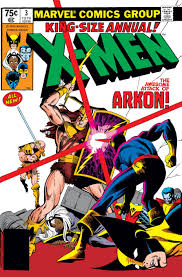
X-MEN ANNUAL vol 1 #3
“A Fire in the Sky”
by Chris Claremont, George Perez & Terry Austin
1979
The X-Men visit Polemachus, the extradimensional homeworld of warlord Arkon, so that Storm can recharge the planet’s energy rings. There’s not much of note for Wolverine here, aside from a slightly odd scene that treats him and Kurt as knowing enough about electronics to fix one of Iron Man’s old machines. Even Logan queries this, and it’s a role that will soon fall to Kurt instead.
BIZARRE ADVENTURES vol 1 #27
“Show me the Way to go Home…”
by Bob Layton, Mary Jo Duffy, Dave Cockrum & Ricardo Villamonte
July 1981
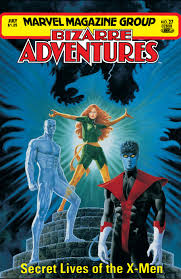
This anthology is best known for a Phoenix story which contains Jean Grey’s origin flashback. But that’s not the one we’re interested in. In this obscure Nightcrawler solo story, he and the Vanisher visit an alien fantasy world; the other X-Men show up in book-end scenes. Although this story wasn’t published until 1981, the team roster makes this the best gap for it.
X-MEN vol 1 #125-128
“There’s Something Awful on Muir Island!” / “How Sharper than a Serpent’s Tooth…!” / “The Quality of Hatred!” / “The Action of the Tiger!”
by Chris Claremont, John Byrne, Terry Austin & Glynis Oliver
September to December 1979
This is the Proteus arc, which begins a chain of stories that’ll take us all the way through to Dark Phoenix. The X-Men finally learn that Hank and Jean survived back in issue #113. In Scotland, the team are reunited with Jean/Phoenix, and defeat Moira MacTaggert’s serial-killing, reality-warping son Proteus (or “Mutant X”). Wolverine isn’t the focus of this arc, but he does get some strong scenes. He starts off grumbling about Cyclops’ leadership again, but that’s mainly to remind us about it before it gets paid off. Proteus’ reality-warping powers leave Wolverine especially shaken, because trusting his senses is so important to him. Cyclops picks a fight with him to snap him out of it. That scene works because Cyclops is finally dealing with Wolverine on his terms. Recognising that, Wolverine finally starts showing Cyclops more respect as his leader.
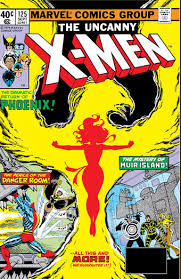
Wolverine remains wary of fighting Proteus, only to snap when Phoenix gets hurt. (He says here that he “loved” Jean, past tense.) He still doesn’t really get Cyclops’ character, and misreads Scott’s ability to keep his cool under pressure as a sign that he doesn’t care. And he cheerfully congratulates Colossus for killing Proteus, when everyone else is being a little more subdued.
Oh, and because Proteus’ vulnerability to metal is a plot point, this is where Wolverine confirms that his whole skeleton is adamantium, not just his claws.
There are two Classic X-Men back-up strips that take place during this arc…
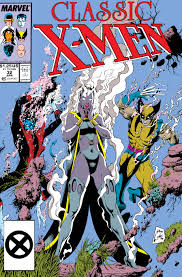
CLASSIC X-MEN #32
“Shreds of Humanity”
by Ann Nocenti & John Bolton
April 1989
Accompanying a reprint of X-Men #126, this is an expanded version of the scene where Proteus first uses his reality-warping powers on Wolverine. It’s staggeringly surreal at times, and doesn’t really fit into the main story, since it ends with Wolverine overcoming Proteus’ effects rather than being shaken to the core by them.
CLASSIC X-MEN #33
“So Good it Hurts”
by Ann Nocenti & John Bolton
May 1989
Accompanying X-Men #127, this is a Havok story. The other X-Men appear on the last page, with Wolverine still reeling from his encounter with Proteus.
Next time, Wolverine enters the 1980s with the Dark Phoenix Saga.

This really is an absurd amount of work. You might compile it all when you’re done and sell it, either as a manuscript or a self-published book.
I like to see that Wolverine’s increased age comes with some wisdom. He clearly knows something about working with people, especially in that Danger Room scene with Colossus.
By placing a period of feral-ness between an early history of engagement with others and his current rehabilitation with the X-Men (and Dept. H), you get the sense that something bad must have happened to him to cause his mental breakdown. It gives the character emotional weight without having to tell a lot of backstory.
When that backstory is filled in, as we’ve seen, it turns out that 900 bad things happened to him. But at least in 1979, Wolverine’s life breaks into (sort of) even thirds that tell a compelling story.
I’m interested to know the first time Wolverine’s age is radically extended in the publishing history. Is it Uncanny X-Men 268 with Captain America and the Black Widow set during WWII? I don’t expect the annotations to continue that far, although it would be amazing if they did.
I love those Classic X-Men #32-33 backups. I originally read the Proteus story from the Classic reprints and those backups were just part of the story, you know? But the great thing about them, to me, is that they sold the horror of Proteus’ power. Reading them as a kid without the backup strips, Proteus probably would have just come across as an energy vampire to me or something.
Fantastic art by John Bolton.
I never fully understood what Department H/Alpha Flight were hoping to accomplish by capturing Wolverine. While I understand that they spent a lot of time and money training him and want to recoup those losses, he legally resigned his commission. Did they truly believe that illegally imprisoning him would convince him to willingly go on missions for them and that he would willingly return to his cell when the mission was over?
It just comes off sounding like they were acting out of anger and pettiness and never actually stopped to think this through.
Did he legally resign? Thought he just cut off his CO’s tie and walked off with Chuck, making him AWOL.
Wolverine yells that he’s resigning his commission as he’s cutting off the guy’s tie in Giant-Size #1, but Wolverine says in Uncanny #139 that his resignation was never accepted, which is why he and Nightcrawler head up to Canada to settle his accounts. Wolverine was on active duty when he quits, with no intent to return, so I think he counts as a deserter rather than AWOL. Under the (Canadian) National Defence Act, the former carries a penalty of up to life in prison, the latter up to two years.
Vindicator/Department H’s plan to get him back in service here is pretty dumb, though I do think Mac/Vindicator has an emotional case. He’s repeatedly trying to avoid a fight, but more importantly, he stresses how he and Heather took Logan in, helped curb his rages, formed a surrogate family. Mac’s trying to convince Wolverine to pick family over duty, and he doesn’t understand that by this point, that just leads Wolverine back to the X-Men. (And having Sasquatch sucker-punch Logan in the street really, really doesn’t help.)
The absolute apex of Wolverine as a character. He was never again as deep or as interesting than he was in #127-128.
For the life of me I have no idea why so many people disagree.
“ I’m interested to know the first time Wolverine’s age is radically extended in the publishing history.”
I may be misremembering entirely, but isn’t there an exchange in the story here along the lines of “Since when do you speak Japanese?” “Since 1925.”
No, the exchange is just “You read Japanese?” “Yup.” “I didn’t know.” “You never asked.”
I love that scene with the hydraulic press. Wolverine, the guy whos skills so far are limited to fighting, has to repair the presumably cutting-edge technology of the Danger Room control computer that he caused, with a tool box. And he does. Or at least tries to.
I think the only “Wolverine is a lit older than he looks” moment before #268 is in a Byrne issue where he references an Italian WW2 battle, with the implication that he was there.
Correct, S. Uncanny Annual #4 (1980, during the Byrne run but drawn by John Romita Jr.), where he muses that the weather in the hell dimension they’re in reminds him of Italy, during the “bloody winter at Monte Cassino.” Which was the site of a bloody winter campaign in WW2 (1944), and I’m unaware of any other famously cold and bloody events there he could be referencing. Helpfully, per Paul’s chronology, he is free during that period (early 1944), though he’ll have needed to make a relatively quick trip from Australia.
And of course, at the time of publication he could’ve still been as young as his late 50s and been part of a 1944 campaign. By the time UXM 268 came out that would be late 60s, and now late 90s. Perhaps Monte Cassino has been moved to Sin-Cong since 1980.
“This really is an absurd amount of work. You might compile it all when you’re done and sell it, either as a manuscript or a self-published book.”
Yes, and you could call it “Wolverine: The Man of 1,000 Tropes”
ASV-It doesn’t need to be moved ahead on the timeline, because we know Logan was born in the late-1800s.
Logan is well over one hundred years old now.
Good to know I wasn’t far off with UXM 268.
Based on Wolverine’s appearance in those stories, late 50s in Annual 4 or late 60s at at the time of UXM 268 seems unlikely. If he aged normally, I mean. He appears pretty much the same as usual in 268’s flashback, as if he hadn’t aged at all from 1941 to 1990.
Is Wolverine the only (human) Marvel character who ages in real time? If so, the age gap between him and the rest of the X-Men is going to continue getting wider as they’re perpetually reset to their early 30s. He’s already about four times their age.
Back in 1980 Reed Richards and Ben Grimm were still WW2 veterans, weren’t they?
Surprisingly, yes. Marvel Two-in-One #77, published as late as 1981, shows Ben serving in the military alongside the Howling Commandos. The story itself tries to fudge the question of what war it is, but the cover specifically mentions World War II.
I’m pretty sure this stuff was officially retconned out by 1985 when the Fantastic Four Index came out (and had to address this stuff explicitly).
There are others who are specifically tied to WW2 – Steve Rogers, Bucky, Magneto – but they have time-dilating mechanisms in their backstories to counteract the reality that they must have been born 80-100 years ago.
It’s getting harder and harder to hang on to Magneto’s back-story, but the character is ruined if they change it.
Even if he was deaged during the Alpha/Erik the Red stories, it’s going to get to a point where he would be dead before he had a chance to even fight the original X-Men.
I think the current timeline is that Xavier founded the X-Men only in 2001.
Personally, I say just ignore discrepancies in the timeline for the sake of the story.
“ Personally, I say just ignore discrepancies in the timeline for the sake of the story.”
So much this has a good story ever resulted, or a character been improved, by writers trying to “fix” timeline discrepancies in stories published 50 or 60 years ago?
Sigh. No edit function. Should be “So much this. Has a good story…”
I’m sure some of Roy Thomas Earth-2 stuff in the 80s would probably fit that definition, since try8ng to make pieces fit together is something he did a lot then.
“Has a good story ever resulted, or a character ever been improved, by writers trying to “fix” timeline discrepancies in stories published” from an earlier era?
Good question. Outside of the X-Men, my knowledge of publication and continuity is patchy and general. I can’t think of any major X-Men continuity patches that were worth the paper they were published on. But I’d venture two possible examples from the Avengers, and a few hypotheses from those examples.
(1) The retcon of 1950’s Captain America by Stern (Englehart? Gerber?) into modern Marvel continuity.
(2) John Byrne’s (?) retcon of Wanda and Pietro’s origin to remove the Whizzer and make them children of Magneto.
From these two examples, I’d hypothesize that the “fixes” that are successful tended to be a little earlier in Marvel history—the ‘70’s and ‘80’s—when continuity wasn’t so convoluted already. Most characters had a pretty linear story, so a hole was obvious and easy enough to patch. Since he good fixes were good, in hindsight it’s a little harder to see them as fixes and we tend to just see them as part of the character’s history.
Conversely, he bad fixes are glaringly obvious, because they started with a mess and left it even messier. The obvious example to me is Psylocke. But there are certainly plenty more.
@Nu-D:
Byrne probably expected the revelation of Magneto as Wanda and Pietro’s father, since he drew Magda as so similar to Wanda in concurrent issues of X-Men and Avengers in 1979. But for what it is worth the revelation only happened on panel in the last issue of the first Vision & Scarlet Witch miniseries, published in late 1982. Byrne wasn’t involved. Bill Mantlo was the writer and Mark Gruenwald was the editor.
Nu-D-It was the beginning of the excellent Steve Englehart Captsin America with the revelation about the 1950s Captain America.
That was a great story.
Agree with Adam, that these articles could easily be collected into a book when Paul is done. Tremendous work.
Given he was deaged, rejuvenated upon his reentry to earth and his powers may more generally slow his aging – i don’t think Magneto needs to abandon the Holocaust orgin story any time soon. Its the link with Xavier that’s more troublesome
I little tidbit about #120.
Scott concludes late in the story that he committed a mistake by failing to assume that Jimmy Hudson, who he knows to have recruited mutants into Alpha Flight, had access some sort of mutant tracking device comparable to Cerebro.
More than 40 years later, it turns out that far as any published stories show that was indeed not the case.
[…] | Part 8: Weapon X Part 9: Department H | Part 10: The Silver Age 1974-1975 1976 | 1977 | 1978 | 1979 | 1980 | 1981 | […]
[…] Part 8: Weapon X Part 9: Department H | Part 10: The Silver Age 1974-1975 | 1976 | 1977 | 1978 | 1979 1980 | 1981 | 1982 | […]
[…] Part 8: Weapon X Part 9: Department H | Part 10: The Silver Age 1974-1975 | 1976 | 1977 | 1978 | 1979 1980 | 1981 | 1982 | 1983 | 1984 | 1985 […]
[…] Part 8: Weapon X Part 9: Department H | Part 10: The Silver Age 1974-1975 | 1976 | 1977 | 1978 | 1979 | 1980 1981 | 1982 | 1983 | 1984 | 1985 | 1986 | […]